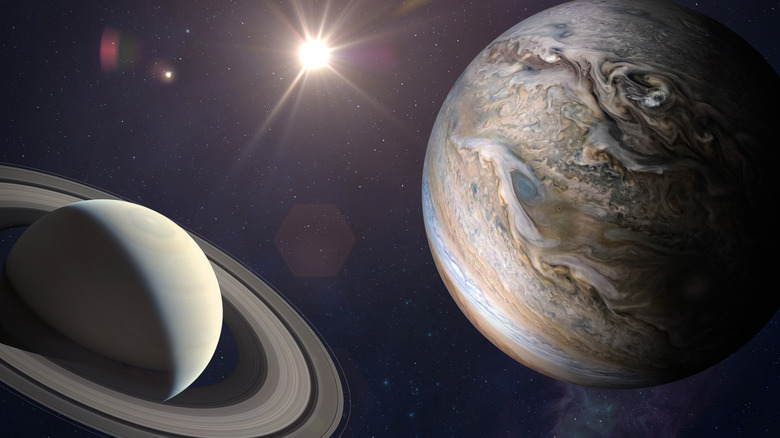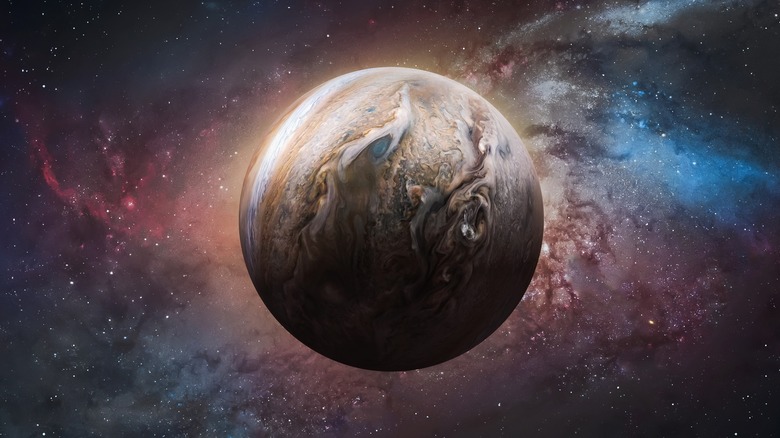Here's Why Jupiter's Rings Are So Faint Compared To Saturn's
Generally speaking, gas giants have a tendency to exude rings and attract moons around their planetary orbits, and it's not just Saturn that has its own outer rings or moons, which define the shape, textures, and patterns of the aforementioned outer rings. According to Cool Cosmos via NASA, all four gas giants in our local solar system are surrounded by rings made up of particulate matter. This particulate matter is made up of "billions of particles of rock, ice and dust," as explained by the University of Colorado at Boulder's Laboratory for Atmospheric and Space Physics.
Each of the four gas giants in our solar system — Neptune, Uranus, Saturn, and Jupiter — has a story that could set them apart from other, terrestrial planets like our own Earth. The physics behind a gas giant's formation, in which tons of asteroids and even smaller planets collide to form a rocky inner core gradually surrounded by an atmospheric envelope, may also explain the origin of its rings and its orbiting moons. Jupiter's moons Ganymede, Io, Callisto, and Europa are a few of the largest in our solar system, and even back in 1998, NASA's Galileo spacecraft observed two rings around Jupiter that may be fed by loose material blowing off each of them.
Jupiter's rings should be brighter, scientists say
It's important to note that Jupiter is a bigger and therefore more visible planet than Saturn. Though the latter gas giant is well-known for its highly visible rings, its circumference is a paltry 235,298 miles around the span of the planet's surface in comparison to Jupiter's much larger 272,946-mile circumference. Researchers at UC Riverside have been researching the differences between the two giants, and it sounds like there's finally a worthy theory that can explain away the lack of visibility in Jupiter's outer rings.
On July 21, 2022, UC Riverside published its findings, saying that it may actually be the four giant moons around Jupiter's orbit that are stopping it from showing its rings as easily as Saturn. The report noted that the loose material found in Jupiter's rings might be colliding with the moons or could even be disbursed out of Jupiter's orbit by the gravitational pull of the moons.
UC Riverside astrophysicist Stephen Kane clarified, saying, "We found that the Galilean moons of Jupiter, one of which is the largest moon in our solar system, would very quickly destroy any large rings that might form." If this is the case, then it's possible that Jupiter's rings have been stymied since the moons were first caught in its orbit. Or, as Kane put it, "It is unlikely that Jupiter had large rings at any point in its past."

